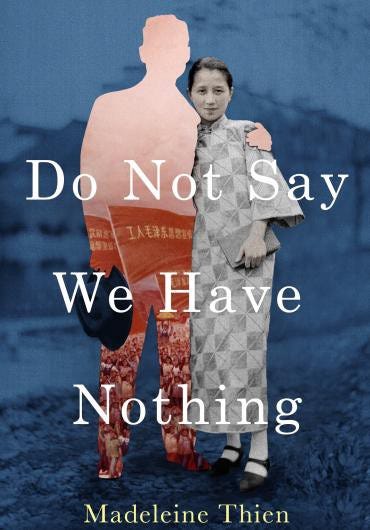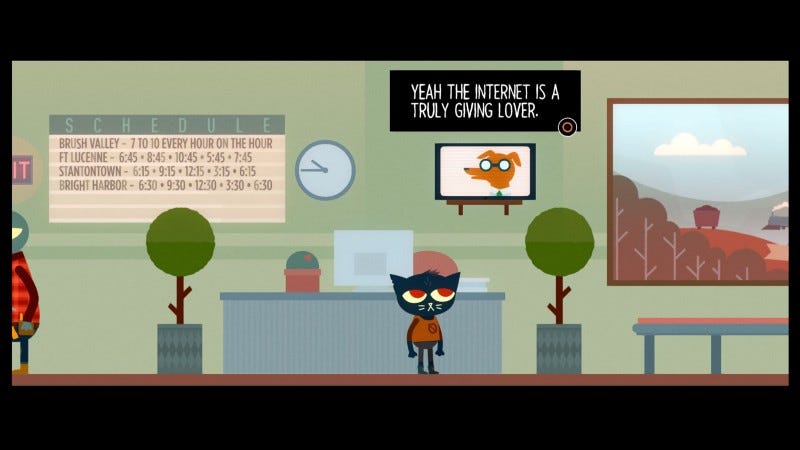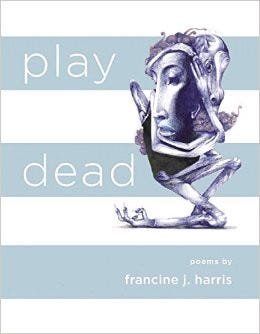
1. A Conversation with Madeleine Thien, author of Do Not Say We Have Nothing, by Sybil Baker

“As the novel grew, I found I was returning to a very particular unresolved question in Dogs at the Perimeter, the complexity and pain of survival; how people live on in the immediate aftermath as well as the long aftermath; how people learn to silence themselves, to speak, to be silent again, to speak. That survival is a life’s work, a double helix of forgetting and remembering.”
Read the full interview, here.
2. Owning Our Resistances With Thunderbird Strike, by Dia Lacina

“It is nearly unheard of for a video game to allow people of color a chance to participate in our own resistance, against our oppressors, on our terms. The times we do get to resist as protagonists of color (like in Infamous: Second Son or Watch Dogs 2) it’s always ultimately for the benefit of white hegemony. Our resistances are too often demonized, ignored, or co-opted.”
3. Robert Yang: “the car in Stick Shift is gay, by the way,” by Kawika Guillermo

“I think my games fit neatly into a “queer games” genre, but at the same time, also like merritt, I’m a bit suspicious of the political implications of classifying us as “queer games” — as if we’re being shuffled into our own queer games ghetto, separate from “normal games” — or if assimilation isn’t our goal, then we also don’t want to be qualified / quantified by normative games, etc.”
Read the full interview, here.
4. Night in the Woods — Generational Divide and Queerness, by Sam Greer

“The local coal mines long shut the town is a shadow of its glory days, reminded of its prosperous past by fading monuments. The game does not focus on the generation who lived through this decline however. It turns its attention towards the millennials growing up in its aftermath, raised in a town with few if any prospects, surrounded by constant reminders of a supposed better time.”
5. 4 LGBTQ Poets to Queer Your Pride Month, by Noah Fields
“Here is a round-up of some of my favorite poetry books that came out last year (no apologies for fabulous puns) from gay, lesbian, nonbinary, transgender, and otherwise queer authors. Savor them. Worship them. Snatch their books from your local bookseller.”
Read microreviews of Ocean Vuong, Grace Dunham, Alok Vaid-Menon, and Loma, here — and Part 2, with Chen Chen, Grace Shuyi Liew, Etal Adnan, & Alex Dimitrov!
6. Review of play dead by francine j. harris, by Stevie Edwards

“The poems are hard and strange because the subject matter is hard and strange: loss of childhood, predatory masculinities, suicidality, a mother with mental health struggles who is at times absent, fat shaming, exploring sexuality amid threats of sexual violence and misinformation about sexual health, institutionalized racism, and the ways poverty can disrupt people from caring for their bodies.”
7. New Developments in the Contemporary Gay Novel, by Kevin Bertolero
“I know, this seems to goes against the idea that we need to see more reform within contemporary gay fiction, but maybe we don’t need “gay fiction” at all. The issue really lies within the way we label what we read. Maybe we need to stop picking out gay fiction as something separate from literature as a whole.”
8. WHEN I GROW UP I WANT TO BE A LIST OF FURTHER POSSIBILITIES: A review of Chen Chen’s debut poetry collection, by Michelle Lewis

“Chen has said in an interview for The Adroit Journal that the poem can often be like “a stench” he follows, rarely an idea he develops. Anaphora helps these poems open like a bloom — or pull us along as a “stench” — and gives the sense that the poet is creating the poem contemporaneously with the reader reading. We come to its surprises together, just as Frost has said we should.”
9. BETWEEN US: Shireen Hamza and Kira Josefsson
“Although Gujarati, my mother tongue, has a rich scholarly tradition of its own, and I would see my paternal grandmother (who did not read a word of English) reading Gujarati-language periodicals, I never tried to develop it as a literary language. I think I would have to start by learning the Gujarati script, which I have heard is not so different from Devanagari script. So, like many Muslims throughout the history of the Islamic world, I put more effort into learning Arabic than I did into my mother tongue. There is an endless amount of effort one can pour into learning Arabic, and I have hardly contributed a drop to that ocean.”
Read the full interview, here.
10. “It’s My Turn to Yell”: KOKUMO on Poetry and Survival, with Noah Fields

“As a performer, I was trained in the art of melodrama. So sometimes I write melodramatically. But more so than melodramatically — I’m not gonna pathologize my femme anger, my dark fat femme trans intersex femme energy, I’m not gonna do it. I feel like poetry just has to be honest. Sometimes the honesty is loud. Sometimes the honesty has to be heard. Sometimes the honesty can’t sit quiet. I write like that, and I sing like that. Hear me: this isn’t just words on a piece of paper. It’s someone’s actual feelings towards life.”
Read more from this interview, here.
Anomaly Features & Reviews, Year in Review — Most Read of 2017 was originally published in Anomaly on Medium, where people are continuing the conversation by highlighting and responding to this story.
